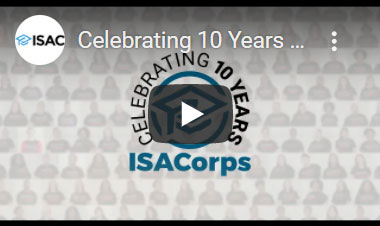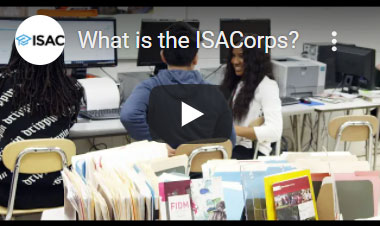Latest Content
- The 2024-25 FAFSA® and the 2024-25 Alternative Application for Illinois Financial Aid are now available
To get financial aid for education after high school, complete the FAFSA, or, if you are an eligible undocumented student, the Alternative Application.
Please note that the U.S. Department of Education has shared that during the FAFSA “soft launch” period, users may experience a waiting room and pauses in availability of the application as the Department does site maintenance and makes needed updates.- Get information about financial aid, help completing applications, and help with college planning/applications and more
Find free workshops, or contact your local ISACorps member. - Planning to complete the FAFSA? Get your FAFSA ID NOW …if you don't already have one. Note that parents of dependent students will need to get their own FSA ID, separate from their student.
- Learn about the Alternative Application for Illinois Financial Aid
The application for qualifying undocumented students to apply for Illinois MAP grants.
- Get information about financial aid, help completing applications, and help with college planning/applications and more
-
Student Loan Repayment Pause ends August 30, 2023. Here’s what you need to know now.

-
Financial Aid Application Completion Performance Metrics
Congratulations to this week's highlighted financial aid application completion medalists! How does your high school rank on completions?
Check out ISAC’s Financial Aid Application Completion Performance Metrics page - Student Loan Debt Relief Scams are on the rise! Learn the signs of a scam so you don’t get caught in one.
Featured
- ISAC Statement on Impact of On-Going Delays in FAFSA Data Processing - 2/1/24
- Joint letter from education agencies regarding Supreme Court decision on race-conscious admissions
- ISAC Statement on SCOTUS Decision Blocking Student Debt Relief: Next Steps for Student Borrowers
- ISAC Statement on the SCOTUS Decision Addressing Affirmative Action
- Learn about Public Service Loan Forgiveness
- Early Childhood Access Consortium for Equity Scholarship Program Application
- Alternative Application for Illinois Financial Aid
- Visit the ISAC Student Portal
What’s your path after high school?
ISAC can help you find it…
Maybe it’s a four-year degree, or maybe it’s a certificate or vocational school. Maybe you take a gap year, or step into a job. ISAC can help you discover what’s possible for you—and we can help provide the support and resources for you to carve a path to get there. In addition to the state grants and scholarships we administer, the ISACorps provides direct services to students and parents statewide in helping them navigate the process of education after high school, financial aid, college search and admissions, and more.
Contact the ISACorps member in your area
Are you a recent college graduate passionate about public service and giving back to the community? Looking for a job? Join the ISACorps

 ISAC Student Portal
ISAC Student Portal




